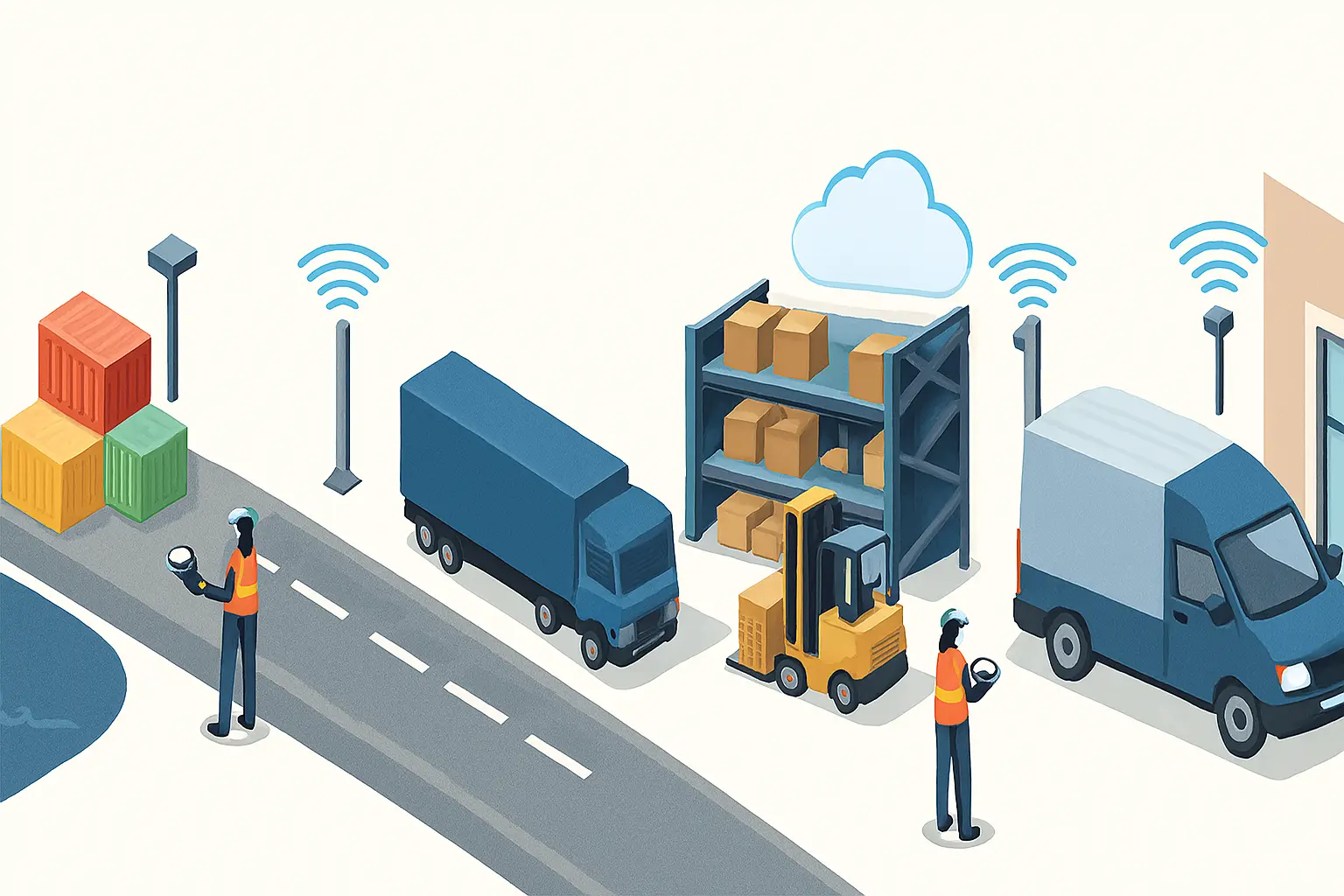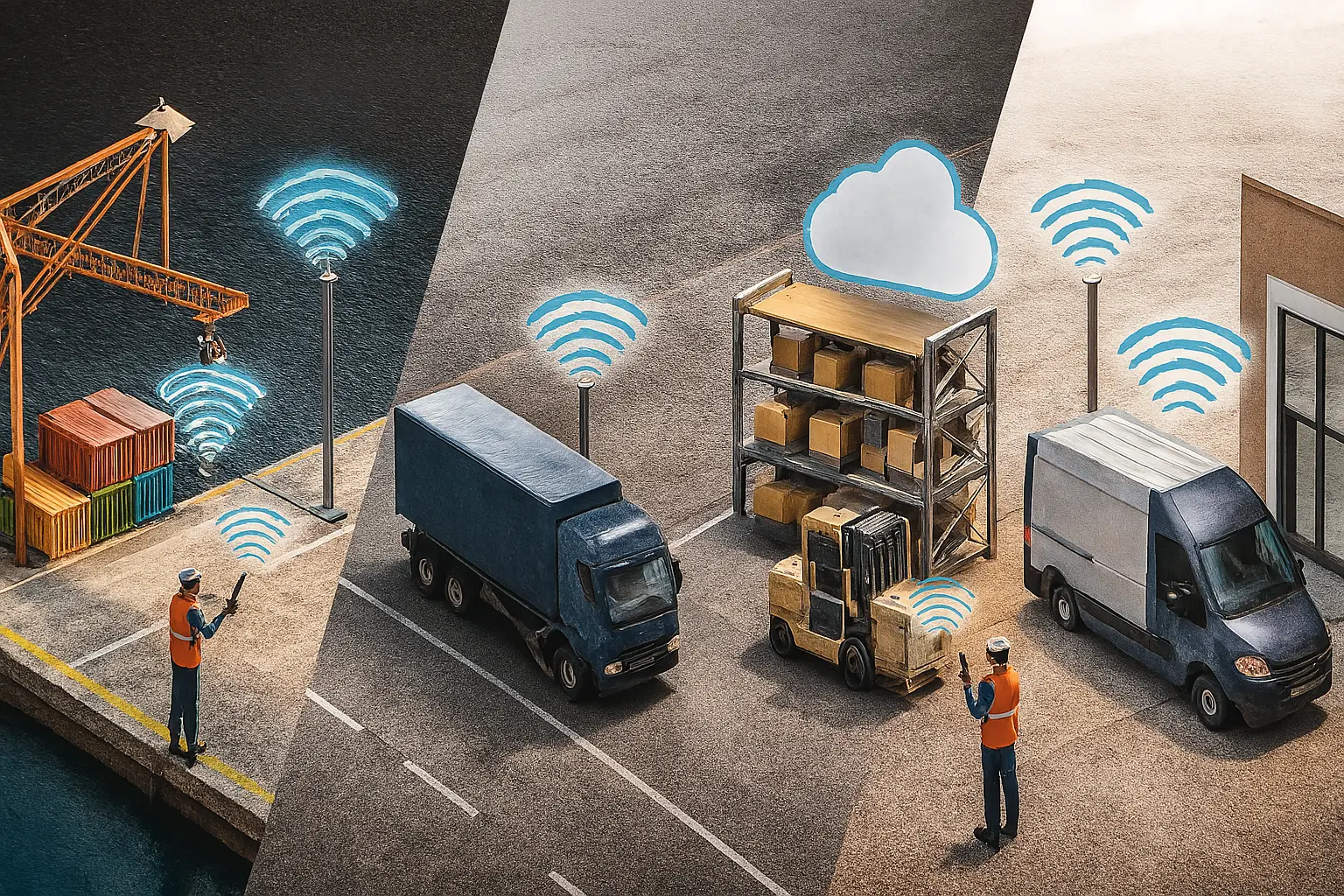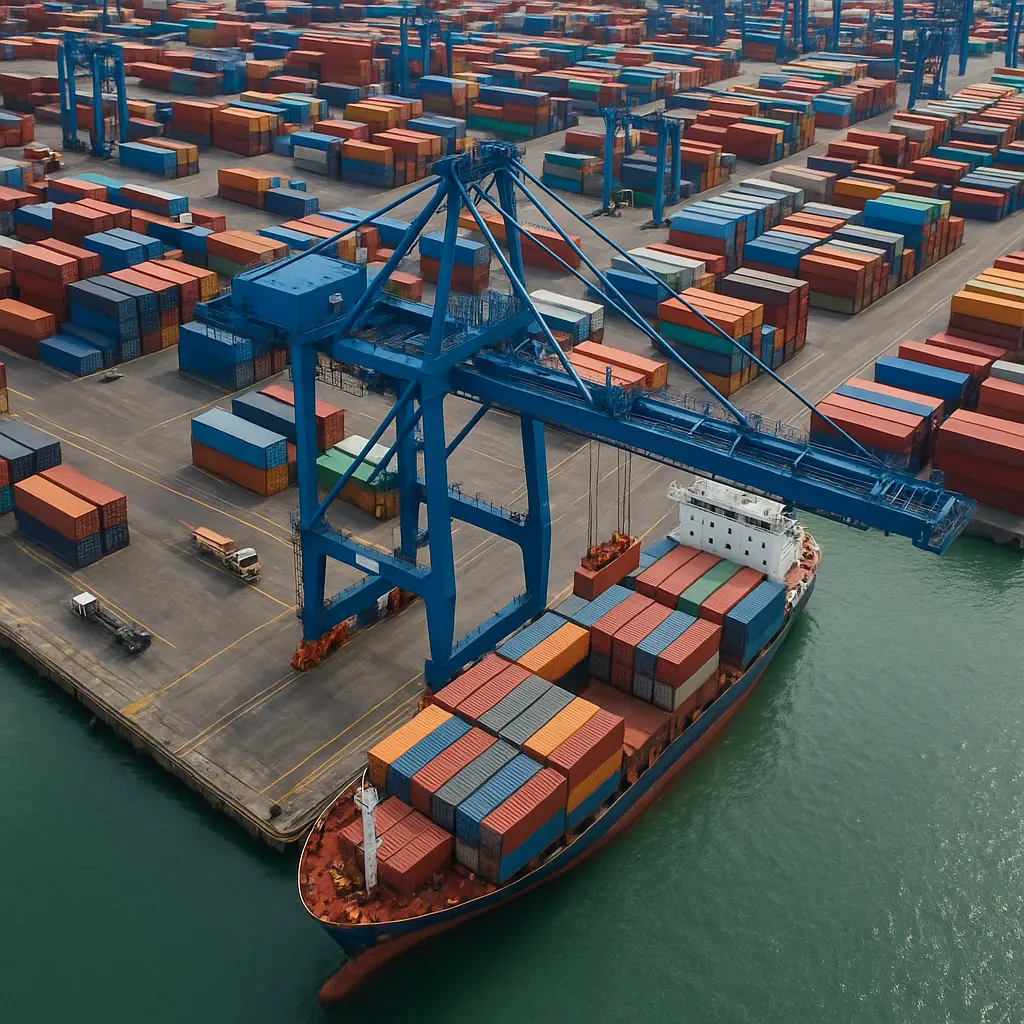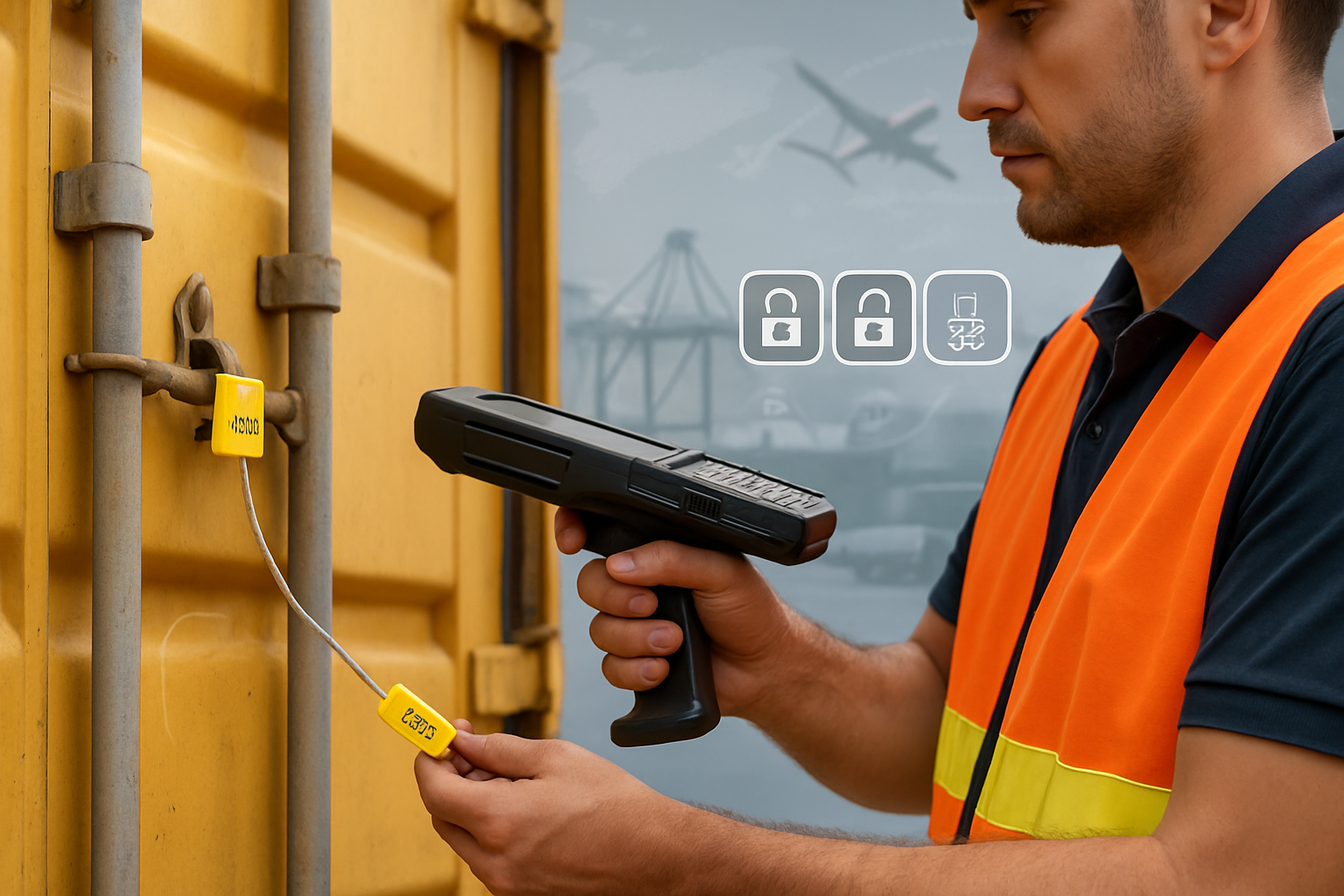RFID readers are the brains behind every RFID system, quietly powering the real-time visibility that global logistics depends on. From ports and warehouses to trucking fleets, these intelligent devices scan, identify, and transmit data about goods in motion, all in seconds.
Today, logistics leaders across the UAE, Singapore, China, the US, and the UK rely on RFID reader technologies to track assets securely and efficiently. At Klik e-Seal, our RFID readers are already trusted in ports, container yards, and customs checkpoints worldwide.
Let’s break down what RFID readers are, how they work, and why businesses everywhere are upgrading to smarter, more connected tracking systems.
What is an RFID Reader and How Does It Work?
An RFID reader is a device that uses radio waves to communicate with RFID tags like Jewellery Tags and Laundry Tags, etc. The small chips or labels attached to objects. When the reader sends out a signal, the RFID chip inside the tag responds with its unique data (like container ID or shipment number). This information is then transmitted to the RFID tag reader software for processing.
In simple terms, an RFID reader acts like a digital scanner, but instead of line-of-sight scanning like barcodes, it uses radio frequencies to read multiple tags at once, even when they’re not visible.
How does an RFID chip work?
An RFID chip stores unique identification data. When it receives radio energy from the reader, it powers up (in passive tags) and transmits that data back. This is how an RFID reader reads an RFID tag wirelessly, enabling seamless identification across large areas.
Frequency Ranges
RFID readers operate at three main frequency bands:
- LF (Low Frequency) – 125 – 134 kHz: short-range, used in access control.
- HF (High Frequency) – 13.56 MHz: medium-range, common in libraries and ID cards.
- UHF (Ultra High Frequency) – 860 – 960 MHz: long-range, fast reading; ideal for logistics, ports, and fleet tracking.
“Mini Takeaway: RFID readers are digital gateways that connect physical assets to cloud-based systems in seconds, offering unmatched visibility and accuracy.”
| Component | Function | Example Use |
|---|---|---|
| RFID Tag | Stores and transmits data | Attached to containers or assets |
| RFID Reader | Scans and interprets tag data | Used in ports or warehouses |
| RFID Software | Manages and analyzes collected data | Used in ERP/WMS integration |
Types of RFID Readers by Klik e-Seal
Klik e-Seal designs versatile RFID readers that fit diverse operational needs, from handheld inspections to automated gate control. Each model integrates with RFID tag reader software and supports seamless data exchange across logistics systems.
Bluetooth RFID Reader
Compact, wireless, and powerful, our Bluetooth RFID Reader is perfect for warehouse automation and container scanning. It offers high-speed tag reading and connects effortlessly to smartphones, tablets, or PCs via Bluetooth.
Ideal for teams needing mobility and flexibility, this reader enhances on-site productivity without complex wiring.
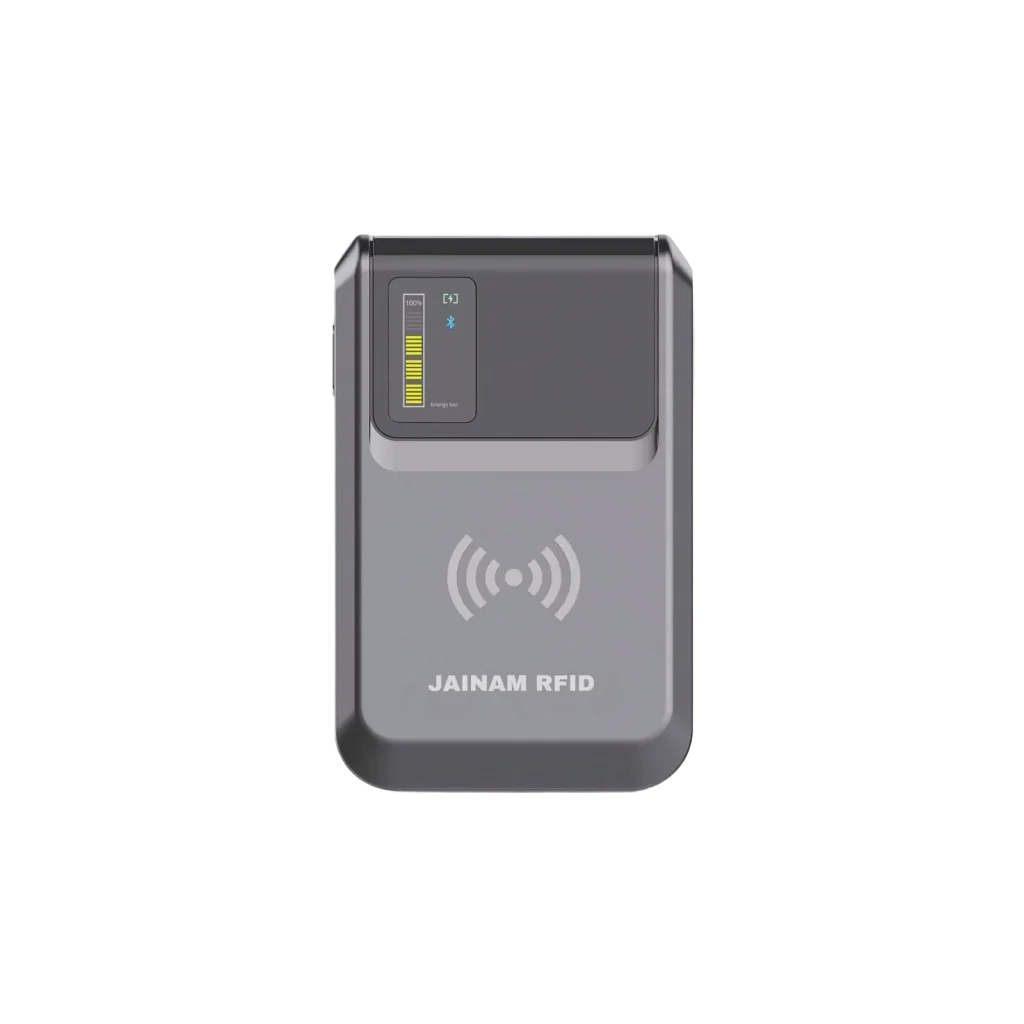
Handheld RFID Reader
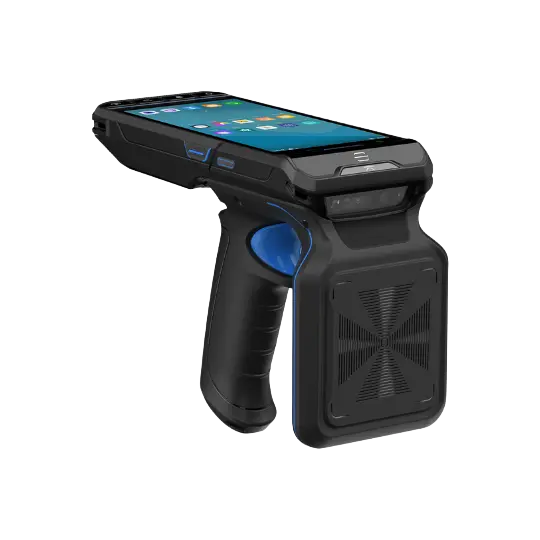
Built for on-field durability, Klik e-Seal’s Handheld RFID Reader is engineered for multi-tag scanning, port inspections, and vehicle yard management.
Its ergonomic design ensures comfort during long shifts, while rugged construction withstands extreme environments, from dusty truck yards to humid docks.
Mobile RFID Reader
Our Mobile RFID Reader converts your smartphone into a powerful scanning tool. Customs officials, fleet operators, and warehouse managers can instantly detect, verify, and log RFID seals in motion. Compact yet fast, it’s a favorite among cross-border trade professionals across the GCC and Southeast Asia.
Example: A customs officer at Jebel Ali Port can scan multiple container seals while walking, without pausing operations.
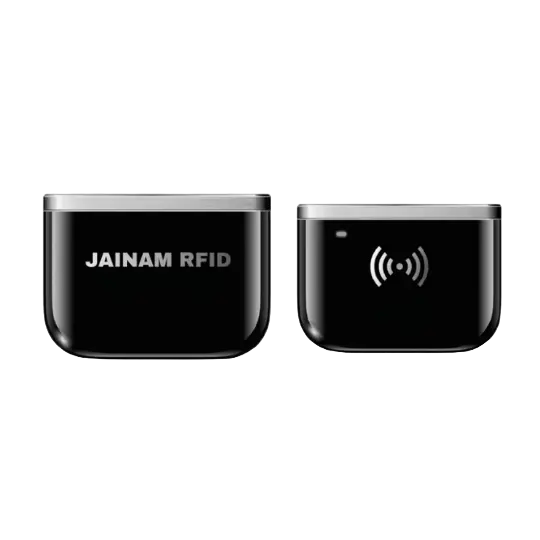
RFID Back-clip Reader
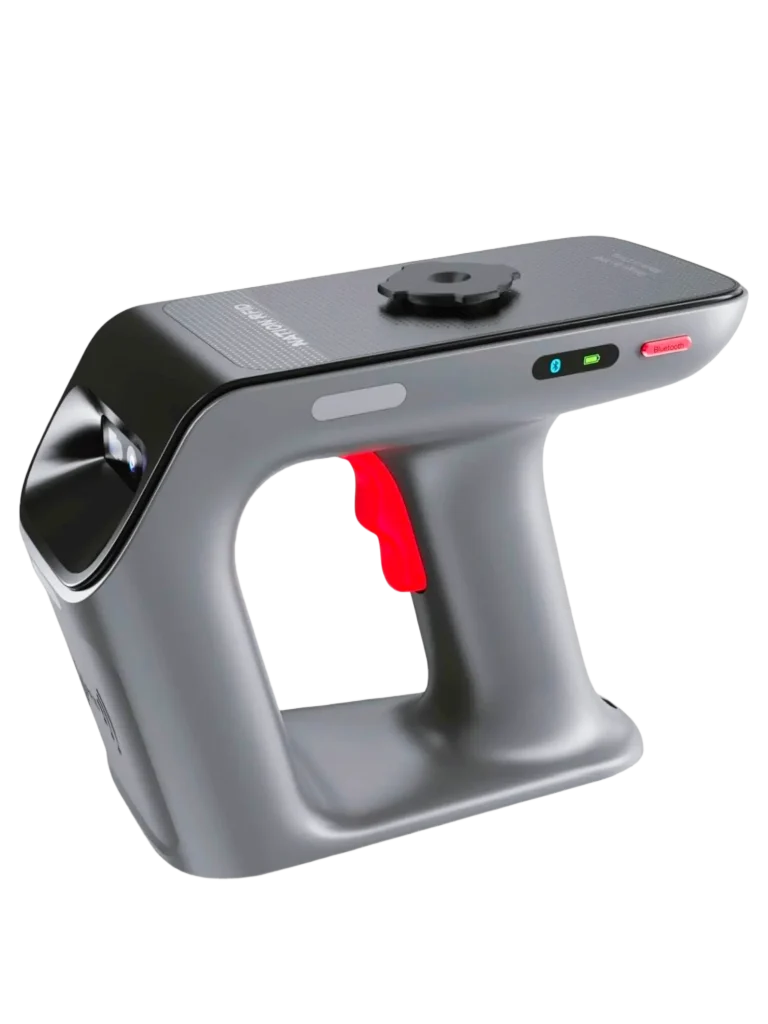
The RFID Backclip Reader (Model: JNM-H1) delivers industrial-grade performance with 33dBm transmission power and reception sensitivity of < -86dBm. Equipped with a 3rd-generation X3M1 RFID chip, it ensures long-range, high-speed tag detection for industrial and port applications.
Ideal for integrated logistics setups that demand speed, accuracy, and durability.
Comparison Table
| Reader Type | Connectivity | Range | Ideal Use |
|---|---|---|---|
| Bluetooth RFID Reader | Wireless (Bluetooth) | Medium | Warehouse & container scanning |
| Handheld RFID Reader | Wi-Fi / Bluetooth | Long | Field & port inspections |
| Mobile RFID Reader | Smartphone-based | Short to Medium | Customs & fleet tracking |
| RFID Backclip Reader | Wired/Wireless | Long | Industrial & logistics hub |
Global Demand for RFID Readers in Logistics and Trade
RFID adoption is booming across global trade centers like the UAE (Jebel Ali), Singapore, China (Shanghai Port), the Netherlands (Rotterdam), and the USA (Los Angeles Port).
These ports and logistics corridors are implementing RFID readers to automate cargo tracking, reduce customs delays, and prevent tampering during international transit.
For example:
- UAE uses RFID for container visibility across GCC trucking routes.
- Singapore integrates RFID at port gates for real-time customs clearance.
- India and the US deploy RFID seals and readers for compliance and anti-theft protection.
“Insight: RFID readers, when paired with smart seals, cut manual inspection time by up to 70% and reduce human errors in large-scale operations.”
Key Industry Applications of RFID Readers
RFID readers are transforming how industries monitor assets, ensuring transparency from factory to delivery.
Shipping & Freight
Speeds up container verification and customs checks, reducing demurrage costs.
Warehousing
Provides real-time inventory accuracy, automatically updating counts without line-of-sight scanning.
Retail & FMCG
Tracks goods from the factory to the shelf, improving stock rotation and preventing counterfeits.
Oil & Gas / Pharma
Ensures strict traceability, asset safety, and compliance through UHF RFID readers integrated with seals and sensors.
Fleet Management
Enables tracking of trucks, drivers, and sealed cargo on the move, improving route efficiency and reducing losses.
Why Choose Klik e-Seal RFID Readers for Your Business?
Klik e-Seal stands at the forefront of secure, connected logistics. Our RFID readers integrate seamlessly with Klik e-Seal’s RFID smart seals, delivering real-time tracking, tamper detection, and global data visibility.
With proven deployments across ports and customs in Asia, the Middle East, and Europe, our solutions ensure compliance, accuracy, and scalability, all backed by reliable reader technologies and API-ready integration.
Action Line:
Upgrade your cargo visibility and compliance with Klik e-Seal’s RFID solutions today.
Frequently Asked Questions
RFID readers, especially UHF RFID readers, can detect tags from a few centimeters to over 12 meters, depending on the antenna’s power and the surrounding environment.
It detects and verifies RFID-enabled security seals, ensuring containers remain untampered during their journey.
Sectors like logistics, warehousing, manufacturing, oil & gas, and pharma use RFID readers to boost visibility, accuracy, and security.
Yes. Klik e-Seal’s Bluetooth and mobile readers integrate effortlessly with ERP, WMS, and customs software used by global logistics operators.
Markets such as the UAE, Singapore, the US, and India are leading adoption as global trade becomes increasingly digitized.
